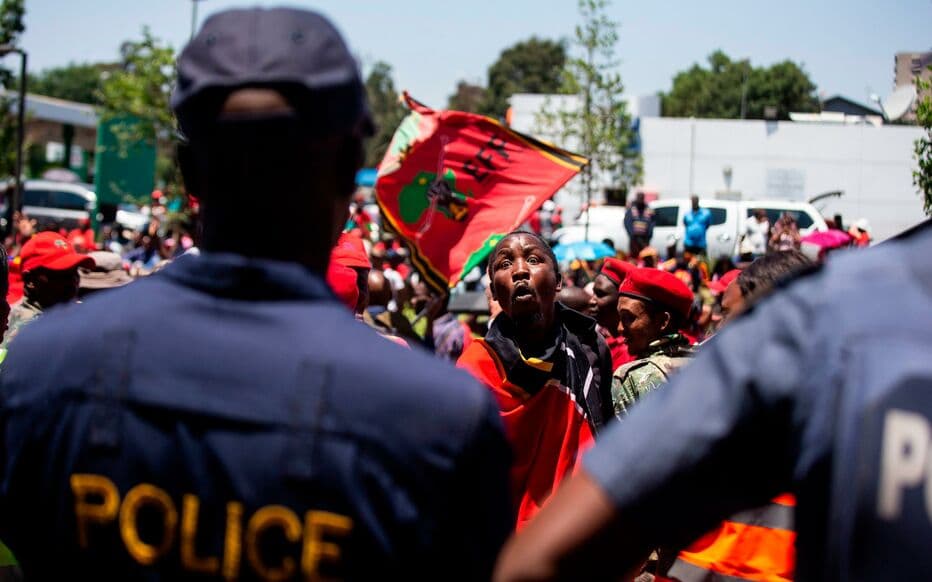Are the beginnings of new “food riots” visible in sub-Saharan Africa, following the example of the deadly violence in Sierra Leone on August 10, 2022? Soaring food prices are sparking fears of social unrest across the continent. In a report on food security published on July 29, 2022, the International Monetary Fund (IMF) unrolls a long list of double-digit inflation in many African countries.
In April, the International Monetary Fund warned that “food security fears have increased sharply” with the war in Ukraine and the explosion in food prices, heightening “the risk of social unrest” in vulnerable countries. Since then, the situation has worsened still further, despite the recent, very gradual resumption of grain exports from Ukraine.
Record inflation in Zimbabwe
At the top of the list of countries hardest hit by food inflation on the continent is Zimbabwe, where food price inflation reached 255% in June. Although the country has suspended import duties on staple products such as oil, rice and flour, nothing has been done.
Russia is Zimbabwe’s leading supplier of wheat and agricultural chemicals. The country’s economy, already strained by disputes over the reappropriation of agricultural land and the Covid-19 crisis, is suffering the full impact of the war in Ukraine.
Deadly riots in Sierra Leone
Far behind Zimbabwe, but still heavily affected by the crisis, are Ethiopia (38.1%), Rwanda (26.1%), Angola (25.1%) and Sierra Leone (23% in April, according to IMF data). Double-digit inflation rates, leading to fears of a return to food riots in some areas. In Sierra Leone, demonstrations against the high cost of living turned into riots on August 10, 2022 in the capital Freetown, resulting in the death of at least twelve civilians and four members of the security forces, beaten to death by a crowd calling for the president’s departure.
Despite its diamond-rich soil, Sierra Leone is one of the least developed countries in the world. The former British colony of 7.5 million was still recovering from a brutal civil war from 1991 to 2002, and the Ebola epidemic of 2014-2016, when it was hit by the Covid-19 pandemic and then by the consequences of the war in Ukraine. For the 43% of Sierra Leoneans who survive on less than $1.90 a day, rising prices for basic foodstuffs such as rice are an additional burden that risks becoming unbearable.
West Africa particularly at risk
And Sierra Leone is far from being the only country in the region affected. The whole of West Africa is facing a crisis that raises the spectre of the riots of 2008, with more or less violent protests in some thirty countries, notably Senegal and Cameroon. Ghana records a food inflation rate of 30.7%. In Burkina Faso, it’s 25.2%, and Togo, Gambia, Senegal and Guinea are flirting with rates of between 12 and 14%. The rise in wheat prices is “particularly worrying” for the IMF, as sub-Saharan Africa imports 85% of its cereal consumption. Several West African countries, such as “Benin, Cape Verde, Gambia, Senegal and Togo import more than half their wheat from Ukraine and Russia”, explained Alain Sy Traoré, in charge of agriculture and rural development at the Cédéao, to the newspaper Le Monde, on July 26, 2022.
Not only are imported cereals expensive, but local crops such as cassava and yams are also suffering from inflation. The cause: rising fertilizer prices, of which Russia is the world’s leading exporter. This situation has led the UN to fear “a hurricane of famine”, while the IMF warns of the risk of “social protests”. Prices for essential foodstuffs such as oil and cereals have already exceeded those reached during the Arab Spring of 2011 and the “hunger riots” of 2008.
Hunger riots, Act 2?
Should we fear an Act 2? In April 2022, Qu Dongyu, Director-General of the Food and Agriculture Organization (FAO), drew a parallel between the 2008 explosion and the current situation: both crises are marked by soaring food, fuel, fertilizer and transport prices. In his view, the situation could be even more problematic this time around, due to two years of pandemics and the major risks posed to harvests in 2023 by the war in Ukraine.
According to the FAO, even before the outbreak of conflict in Ukraine, 828 million people were food insecure in 2021. Even international organizations are suffering from the economic crisis: in West Africa – particularly in Burkina Faso, Cameroon, Chad, Mali, Mauritania and Niger – the World Food Program (WFP) has “significantly” reduced food aid rations. Disruptions are imminent in Angola, Malawi, Mozambique, Congo, Tanzania and Zimbabwe, warns the WFP.
The situation is set to get even worse, as 71 million people in developing countries have fallen into poverty in just three months. All the more reason to swell the ranks of the hungry – and perhaps trigger a new wave of protests across the continent.
Editorial staff (with AFP and CA)



